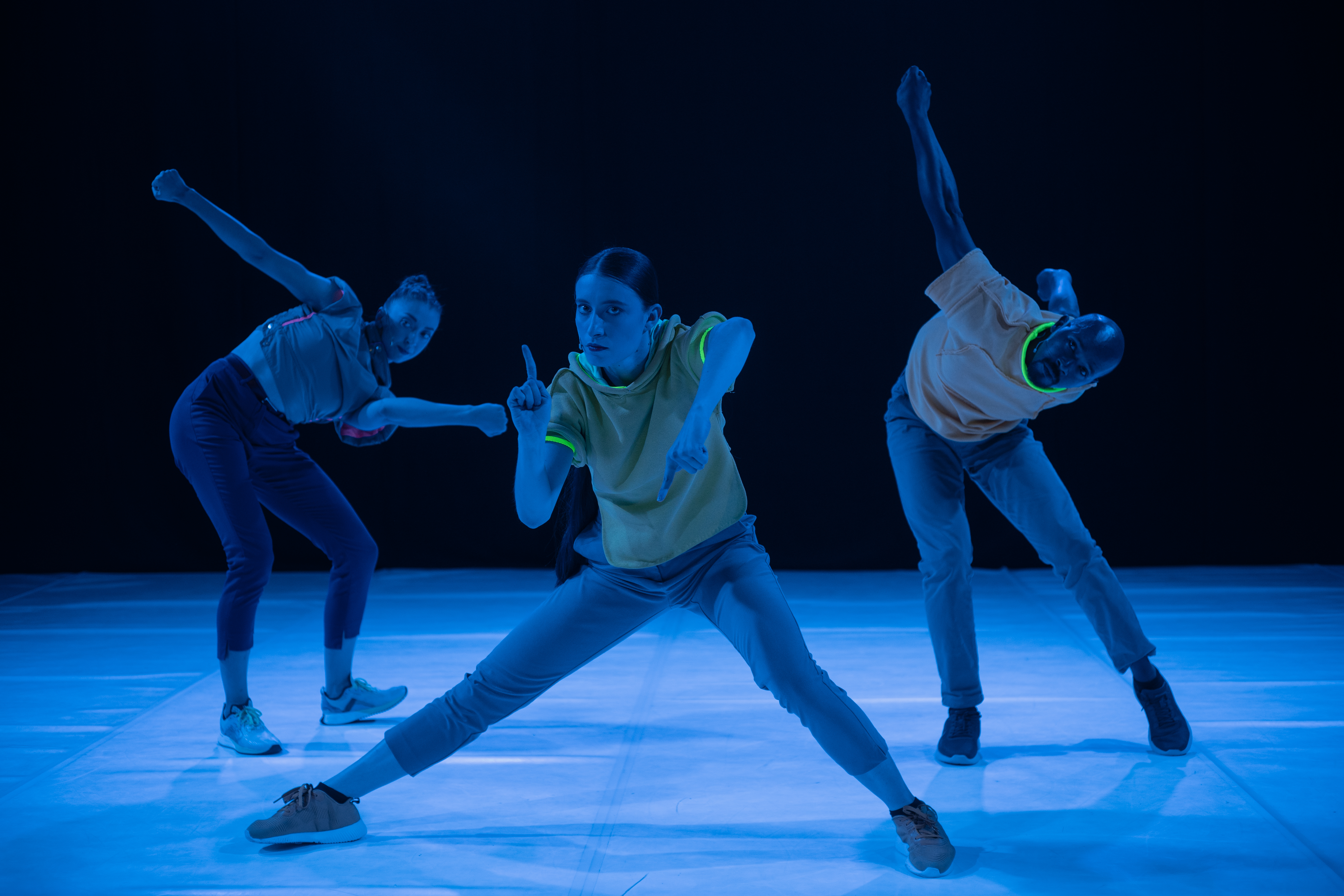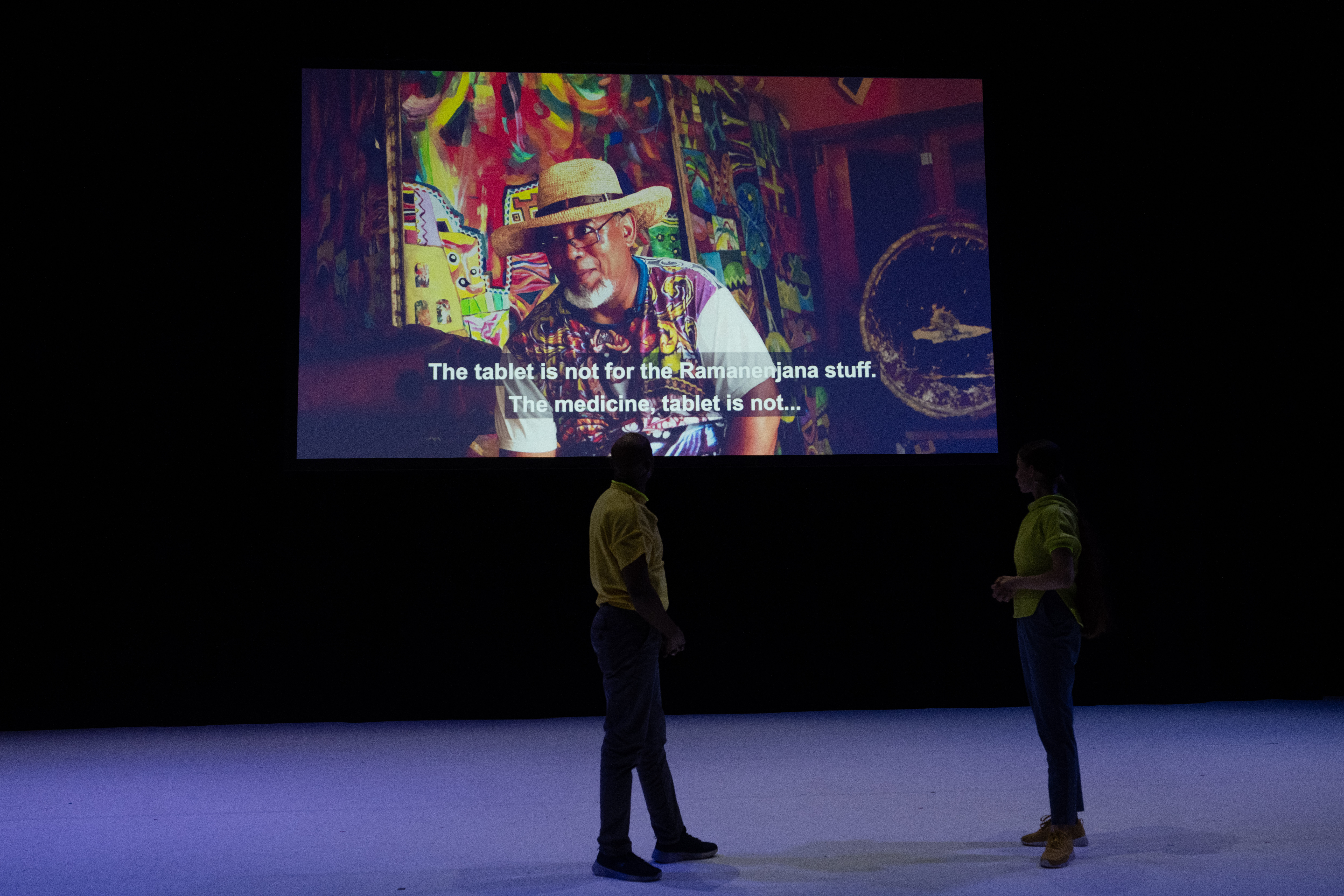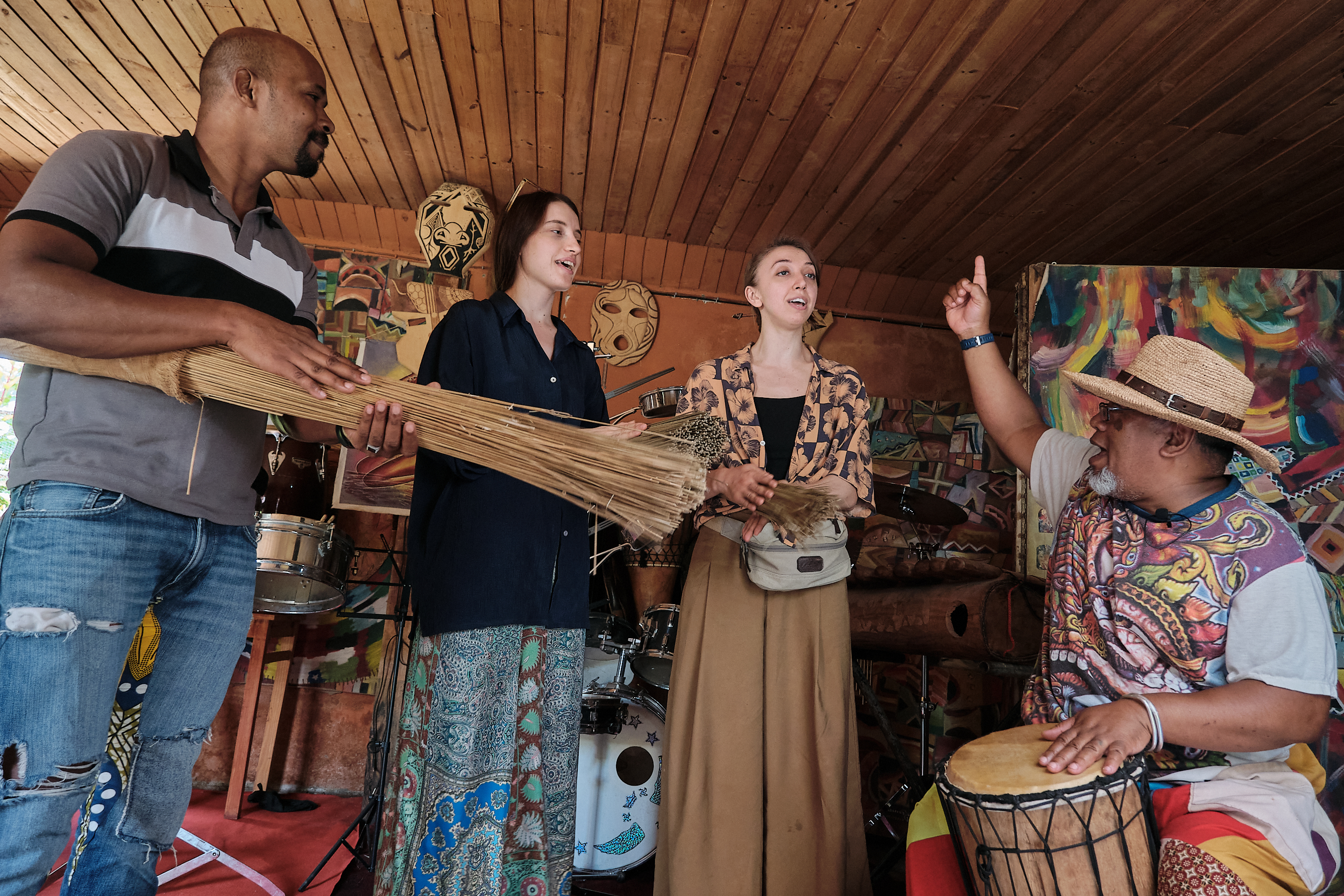Ramanenjana is a performative docu-fiction presented at PuSh International Performing Arts Festival by Romania’s Tangaj Collective. Part dance, part audio-visual lecture, the performance explores historical accounts from 19th century Madagascar through a post-colonial perspective.

The production is a collaborative effort between Romania-based choreographer/filmmaker Simona Deaconescu and South Africa-based Malagasy choreographer/art activist Gaby Saranouffi. Ramanenjana is informed by years of research into archival accounts of colonists and Christian missionaries who witnessed the extraordinary social phenomenon back in 1863 combined with present day discussions that center the residents and researchers in Madagascar. The production is a stunning blend of documentary-style interviews, live narration by Simona Deaconescu and dance-based storytelling by live performers Haja Saranouffi, Maria-Luiza Dimulescu, Simona Dabija.

What is Ramanenjana? To address this question, Deaconescu takes a deep dive into various themes – the role of dance in building political consciousness and mass resistance, the impacts of western colonization and land theft in Madagascar, an exploration into how the advent of Christianity tampered with Madagascar’s cultural fabric – overall the work is an artistic attempt at critically evaluating the biases and shortcomings of the historical accounts of Ramanenjana while seeking contemporary yet rooted perspectives from Malagasy cultural practitioners. A companion document designed like a newspaper is offered to everyone in attendance. It is a journalistic account that serves to further educate the reader on the concrete, research-based articulation of the 1863 event at Antananarivo.
The next question that arises is: How does an artist with an ingrained western bias unlearn the urge to fetishize or appropriate a mystical tradition that is rooted in cultural wisdom beyond one’s immediate grasp? The production approaches this challenge in bold ways. The performers make no attempt to recreate or demonstrate Ramanenjana as it might have occurred in 1863. The dancers emote the layered story with verbal commentary, cheeky finger tutting and body movements that invoke awe and intrigue. A projector plays the documentary interviews and transcripts which further enrich the audience’s understanding of the historical event. These multiple moving elements are pieced together with sound effects, musical beats and fluorescent lighting that subtly dictate the narrative pacing and focus of the audience.

The performance ends with Deaconescu confessing to Olembelo Ricky that back home, she might face accusations of cultural appropriation. As a musician from Madagascar and expert in Vazimba Civilization, he reassures her that she is a fellow human who need not fret about being an outsider to the culture. Subjecting a diverse audience to the scene where Ricky is soothing Deaconescu’s ego is an ironic demonstration of white fragility. It is quite a dissonant note to end on, contradicting the production’s emphasis on undermining one’s internalized racist and colonial mindsets.
Overall, the show is educational and quite an artistic marvel. I simply wish that artists from the global majority get to tell their own stories. Deaconescu’s Ramanenjana invariantly platforms more white perspectives than is strictly necessary.
– Annapoorna Shruthi
